- Home
- Michael Chabon
Fight of the Century Page 2
Fight of the Century Read online
Page 2
One of the benefits of having talented writers, virtually all nonlawyers, write about legal cases is that they are likely to find new ways to describe and represent the issues at hand. I’m quite sure no one has described Miranda warnings (“You have the right to remain silent…”) quite like Hector Tobar: “a civic poem in free verse.” Michael Chabon’s story of the creative tactics employed by the ACLU’s Morris Ernst in challenging the seizure of James Joyce’s Ulysses as obscene—including ensuring that the case was assigned to a judge “with literary pretensions”—is so engagingly rendered that the movie version feels inevitable. Anthony Doerr’s account of the ACLU’s successful challenge to an attempt to require the teaching of intelligent design, a form of creationism, in public school, not only captures the drama of the trial and the essence of the legal principles involved, but concludes with an empathetic evocation of the man behind the failed effort to impress intelligent design on the school’s students in the first place, one that underscores how closely related we all are, even when we deeply disagree. George Saunders makes a complicated case about federal court jurisdiction over deportation cases into a compelling narrative of the rights of all humans to challenge their detention in a court of law, no matter what their country of origin.
And Moriel Rothman-Zecher concludes his essay on why he believes it was right for a black ACLU lawyer and civil rights activist, Eleanor Holmes Norton, and a Jewish ACLU lawyer, Allen Brown, to represent the leader of the Ku Klux Klan in Brandenburg v. Ohio, with an elegant defense of the ACLU’s commitment to free speech in the most difficult cases:
The ideologies of Brandenburg and the tiki torchers [of Charlottesville] are not as divergent from the core ideologies of the American political regime as many think they are. In truth, throughout American history, government suppression of speech and expression has been far more frequently and viciously directed against leftists and radicals, against black militants and Jewish communists, than it has against the various Brandenburgs of this nation. In that light, the Brandenburg case appears as a form of aikido, in which Norton, Brown, and the ACLU harnessed the force of American white supremacism itself as a means of ultimately defending those who would seek to undermine American white supremacism and its American cousins: bigotry, xenophobia, imperialism, and bellicosity. In other words, in challenging the government’s right to punish Brandenburg for saying heinous things, a counterintuitive but profound sliver of freedom was wrested from this deeply unfree country. And for that, here in southwest Ohio, I am grateful.
A book about the ACLU would not be a book about the ACLU without some dissent. Discussing Buckley v. Valeo and Citizens United, Scott Turow, a longtime ACLU member, contributes a spirited critique of the ACLU’s position on campaign finance regulation. In Turow’s view, unregulated campaign expenditures threaten to undermine democracy itself, and the ACLU’s position that the First Amendment restricts such regulation is deeply misguided. For the record, the ACLU’s position is not that campaign finance regulation is necessarily unconstitutional, only that the government needs to point to a compelling justification and regulate narrowly, because limiting how much citizens can spend on speech of a particular content necessarily implicates the First Amendment. That said, reasonable people can and do disagree on this—within and beyond the ACLU. But on one thing we insist: we will defend Turow’s right to disagree, and indeed proudly include him in our collection precisely because, above all, we cherish the right to dissent. We look forward to fighting for that right for the next 100 years.
STROMBERG V. CALIFORNIA (1931)
In Stromberg v. California, the Supreme Court held that the state of California could not prohibit the display of red flags as “a sign, symbol or emblem of opposition to organized government.” Writing for the seven-justice majority, Chief Justice Charles E. Hughes relied not on the First Amendment, but rather the Fourteenth Amendment, to rule the statute’s ban unconstitutional. Nevertheless, the Stromberg decision laid the groundwork for future First Amendment rulings, including another significant ACLU victory, 1989’s Texas v. Johnson, in which the Supreme Court held that flag burning constituted a form of constitutionally protected political expression.
No More Flags
VIET THANH NGUYEN
Flags are potent symbols. We fly them, we cherish them, we burn them. Some use flags as emblems of free speech and others use them to suppress free speech. Congress has occasionally tried to protect the American flag from being abused, and in 1919, California passed a law banning the public display of red flags. This would eventually lead to Stromberg v. California.
In the early twentieth century, the symbolism of red flags was obvious. The Soviet Union’s flag was red, and when Americans saw red, they saw communism. Labor unions and the Socialist Party were strong in the United States, but they also faced opponents who saw unionization and socialism as gateways to communism. So when a nineteen-year-old camp teacher flew a red flag at a summer camp for the working class in California, the Better America Foundation (BAF)—whose name foreshadows “Make America Great Again”—took aim at her.
BAF was a “pro-business” organization that aimed to suppress radicalization and communism, opposed labor unions and minimum wage, and advocated for a six-day workweek. In summer 1929, it persuaded the local sheriff to search the Pioneer Summer Camp, a California youth camp for working-class children. They arrested Yetta Stromberg, a teacher and member of the Youth Communist League. Stromberg was charged in relation to a daily ceremony she did with the kids that involved raising a red flag and pledging allegiance to “the workers’ red flag, and to the cause for which it stands, one aim throughout our lives, freedom for the working class.” Stromberg was convicted, but took her case to the Supreme Court. In 1931, the Court ruled that California’s red flag ban was too vague and could be used to disrupt the constitutionally protected rights of dissenters. California repealed the law in 1933.
Being a Vietnamese refugee, I am familiar with bitter controversies over flags, red or otherwise. I was born in the Republic of Vietnam, otherwise known as South Vietnam. Its flag was a field of yellow with three red horizontal stripes. When the South Vietnamese regime was defeated and Saigon fell on April 30, 1975, the victorious North Vietnamese army planted the blue, red, and yellow flag of the National Liberation Front on the roof of Independence Palace in Saigon. The National Liberation Front was the southern guerrilla and political movement that opposed the southern Vietnamese government and its American allies. Some of the NLF’s leadership was covertly communist, however, and the NLF’s nationalist flag would not fly for long. Soon the country would see only the flag of the Democratic Republic of Vietnam, the north, flying everywhere: a red flag with a yellow star in the center.
The defeated Vietnamese who fled from the south and came to the United States took their yellow flag with them. Here, the flag would come to symbolize everything about the Republic of Vietnam: a lost country from a lost time, a displaced and exiled nation whose citizens were steeped in bitterness, rage, sadness, and melancholy. As a child growing up in San Jose’s Vietnamese refugee community, I saw the flag on every occasion the community gathered, carried by veterans who wore combat uniforms.
The anticommunism of Vietnamese refugees was completely aligned with the anticommunism that already ran deep in the United States, especially in California. Here lived the largest populations of Vietnamese refugees, who found sympathy from across the political spectrum for their political views. Conservative Republican support for Vietnamese anticommunism was not a surprise. But Democratic politicians also supported their Vietnamese constituents, and on August 5, 2006, the California legislature passed a bill declaring that the yellow flag of the south would be the Vietnamese Heritage and Freedom Flag of the Vietnamese community and would be displayed at official events in which a flag for Vietnam was called for. A red flag would once again be banned.
In the Vietnamese American community, no one dared to fly the red flag because the punishment from
the community would have been immediate. Museums that had exhibited images of Ho Chi Minh and a Vietnamese American businessman who had put Ho Chi Minh’s picture in his store window were protested and picketed by vocal Vietnamese activists, sometimes numbering in the hundreds. Free speech hit its limits in the Vietnamese American community around any words, images, or symbols, like the red flag, that invoked communism or could be seen as communist in any way. Even an art exhibit that featured a foot bath painted to resemble the yellow flag with red stripes was protested against by many in the community, who did not care that the foot bath was meant to represent one of the key industries of the Vietnamese American community: the pedicure and manicure shop. What the community saw was the desecration of a sacred flag.
On my campus at the University of Southern California, the red Vietnamese flag hung from the rafters of the international building, among all the other flags of the world’s countries. Then, in 2009, an anticommunist Vietnamese activist came to campus and stapled the yellow flag around the red flag, and the flag controversy came directly to me.
A colleague and I called a meeting of the Vietnamese American community on campus, which was represented by two student associations: one for the children of refugees and the other for international students from Vietnam. The international students spoke about the need for forgiveness, reconciliation, moving on from the war-torn past. Their sentiments were noble, but perhaps these students could afford to be noble: they had won. The children of refugees spoke of their parents and all they had lost. They invoked defeat, shame, pain, and filial piety. They wanted the yellow flag to represent them—their families and their heritage.
The conflict over these red and yellow flags connects directly to Stromberg v. California. In the battle over free speech, the problem lies, as it always does, when both sides believe their speech is correct. In a democracy of plural public and private spaces, there should be enough room for all forms of speech, which is what the Supreme Court ruled in Stromberg. Stromberg could fly her flag, and the state of California and Better America Foundation could fly their flags. Neither the state nor a private group could create a singular space through ideology that ruled out all other forms of speech or symbolism.
For Vietnamese Americans, however, that is exactly what they have tried to do in the spaces that they dominate, like Orange County, where no one dares to fly the red flag. In other scenarios, anticommunist Vietnamese Americans have used the legal means at their disposal and created an alternate possibility of flying the yellow heritage flag in place of the red flag at official state functions. Or they have encouraged politicians, like Democrat Zoe Lofgren, to boycott public spaces where the red flag is flown; refusing to attend events commemorated by symbols we disagree with is also a form of free speech.
The irony, of course, is that Vietnamese Americans who are strongly anticommunist oppose the communist regime partly because of its suppression of free speech and dissenting views. And yet in many Vietnamese American communities, there is a bright red line—the one that signals even the most tentative reconciliation with or sympathy for the communist regime—that one cannot cross in public. Those who loudly proclaim the inherent goodness of free speech, and the evils of suppressing it, would do well to listen to their own words before preventing the words of others.
The politics of flag waving are inseparable from the actual and symbolic politics of free speech, which is intimately connected with free thinking. When it comes to flags, the most persuasive act of free thinking that I encountered during the debate between Vietnamese students came from one young Vietnamese American man. Perhaps, he said, we should fly both flags. And if we cannot agree to do that, we should not fly any flag at all.
POWELL V. ALABAMA (1932)
PATTERSON V. ALABAMA (1935)
In 1931, nine black American teenagers hopped on an Alabama train headed toward Chattanooga, Tennessee. Later called the Scottsboro Boys, their names were Haywood Patterson, Clarence Norris, Charlie Weems, Andy Wright, Roy Wright, Olen Montgomery, Ozie Powell, Willie Roberson, and Eugene Williams. When two white women falsely accused these black men of rape, all men were arrested and imprisoned.
What followed was a quintessential example of American injustice. The Scottsboro Boys were not allowed to speak with an attorney prior to trial, and a lynch mob encircled the jail that held them. When they finally met their two court-appointed lawyers, the Scottsboro Boys discovered them to be ill prepared for trial and completely unfamiliar with the case. One was actually an intoxicated volunteer from the trial’s audience. Unnerved by the publicity and thousands of potentially violent onlookers, the trial judge rushed the cases through his docket. Over the course of two and a half days, a series of all-white juries sentenced all nine teenagers to death, despite the clear ineffectiveness of their counsel, the frenetic proceedings, and the complete lack of evidence that any rape had occurred, much less been committed by the Scottsboro Boys. The mere allegation of sexual relations with a white woman was sufficient to condemn them.
The Communist Party USA sponsored the appeal and provided counsel in what would become Powell v. Alabama. Recognizing the need for experienced counsel, the ACLU’s Walter Pollak was retained to argue that the Scottsboro Boys’ hasty trial and nominal legal counsel violated the Fourteenth Amendment’s due process clause. The US Supreme Court agreed. Justice George Sutherland wrote that criminal defendants in capital cases are constitutionally entitled to legal counsel. However, mere presence of counsel is not enough. Due process demanded that court-appointed counsel be effective, well versed in the case, and prepared to protect the defendant’s freedom. After this initial victory, two additional appeals were required, Norris v. Alabama and Patterson v. Alabama. In both, Pollak and the ACLU contested Alabama’s systematic exclusion of black Americans from the jury pool based solely on their race. In a major victory, the Court agreed that such discrimination was unconstitutional.
This legal triumph, however, has a bittersweet ending. Charges were eventually dropped against four of the Scottsboro Boys, and they returned home after years of incarceration. The remaining five were convicted, despite one of the white women recanting her testimony and admitting the entire story of rape was a lie. Including pretrial detention, each served at least a decade in prison for a crime that never even existed.
Scottsboro, USA
A Brief History
JACQUELINE WOODSON
The youngest was thirteen. The oldest, twenty. Decades later when the Scottsboro Boys’ musical came to Broadway, I began to cough as the actors smiled and danced their way through the play. I coughed as I turned to see the pleased faces of the white audience. I coughed as they clapped along and cheered. Coughed through the blackface on black faces. Through the minstrel show. I coughed so hard I had to leave the theater, and minutes later, I couldn’t stop coughing. Returned later to cough from my seat through the standing ovation.
It’s a response to stress, the coughing is. For as long as I can remember, my own body has told me to remember to breathe as it prevented me from doing so. Breathe. No don’t. Breathe. No don’t. Has told me, through the gagging spasms, that the moment I’m moving through is triggering. Call it genetic memory. Call it the curse of DNA. Call it America. Call it a country that makes black and breathing nearly impossible.
Please don’t tell what train I’m on…
Call it a song by Elizabeth Cotten.
Call it cotton.
Before someone white decided to turn a black tragedy into music and dance for two hundred dollars a seat and no intermission, there were nine brown boys leaving Alabama. Olen, at seventeen, was nearly blind.
Think Blind Boys of Alabama.
Think Huck Finn.
Think Trayvon Martin.
Think the broken promise of forty acres and a mule, Jim Crow, the Great Depression, the big black brute, the white damsel in distress, the American dream—
Think strange fruit hanging from poplar trees.
Think Amos and A
ndy. Think Toms, Coons, Mulattos, Mammies and Bucks and—
The first movie we watched in my African Americans in Film course in college was The Birth of a Nation. Before Cabin in the Sky with the beautiful Lena Horne. Before Fredi Washington graced the screen in Imitation of Life, there was D. W. Griffith’s gaze on America.
By then, four of the Scottsboro boys were already walking, two were suckling infants, and Ozie, Eugene, and Leroy hadn’t yet been born.
In February 2008, my son was born. We named him Jackson Leroi.
Think twenty-two sophomores and freshmen. All of us knowing how black and blue we were at our small liberal arts PWI. With no BSU. Far away from any HBCU. It was the mid-1980s. We had Anita Baker, Luther Vandross, and a professor with an afro named Dr. Jackson getting us through. But by then, my hair was permanently straightened, and when I left my African Americans in Film class, there was my all-white cheerleading team. There was my all-white dorm and white boyfriend. There was my all-white major of English literature, my all-white minor—British Lit. A year later, there would be my all-black sorority. A year later, I would learn about nine black boys. And as the years bent into decades, I would call out their names.

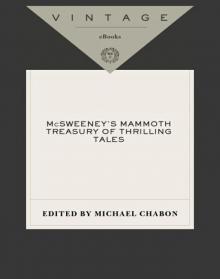 McSweeney's Mammoth Treasury of Thrilling Tales
McSweeney's Mammoth Treasury of Thrilling Tales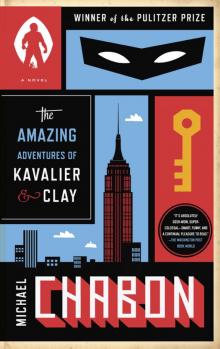 The Amazing Adventures of Kavalier & Clay
The Amazing Adventures of Kavalier & Clay The Yiddish Policemen's Union
The Yiddish Policemen's Union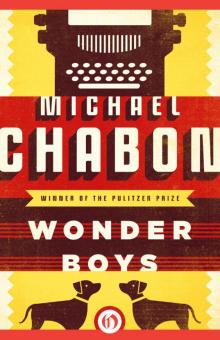 Wonder Boys
Wonder Boys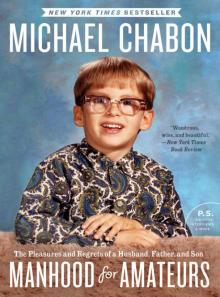 Manhood for Amateurs
Manhood for Amateurs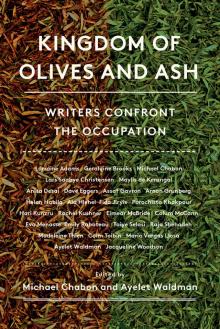 Kingdom of Olives and Ash: Writers Confront the Occupation
Kingdom of Olives and Ash: Writers Confront the Occupation Gentlemen of the Road: A Tale of Adventure
Gentlemen of the Road: A Tale of Adventure A Model World and Other Stories
A Model World and Other Stories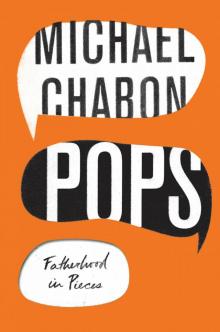 Pops: Fatherhood in Pieces
Pops: Fatherhood in Pieces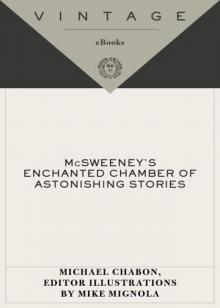 McSweeney's Enchanted Chamber of Astonishing Stories
McSweeney's Enchanted Chamber of Astonishing Stories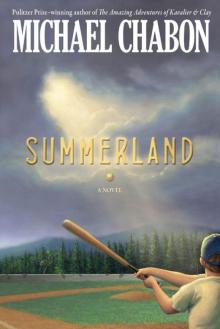 Summerland
Summerland Telegraph Avenue
Telegraph Avenue The Final Solution
The Final Solution The Mysteries of Pittsburgh
The Mysteries of Pittsburgh Werewolves in Their Youth
Werewolves in Their Youth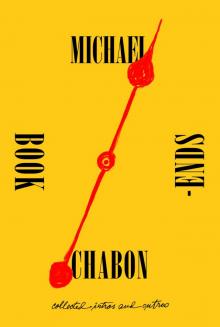 Bookends
Bookends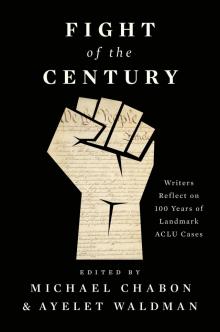 Fight of the Century
Fight of the Century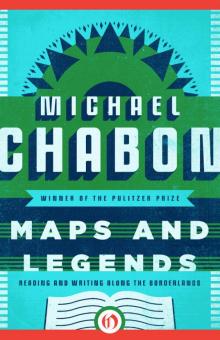 Maps and Legends
Maps and Legends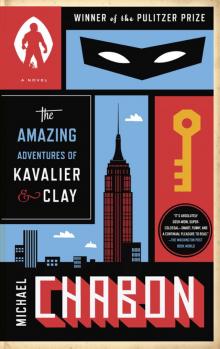 The Amazing Adventures of Kavalier & Clay (with bonus content)
The Amazing Adventures of Kavalier & Clay (with bonus content)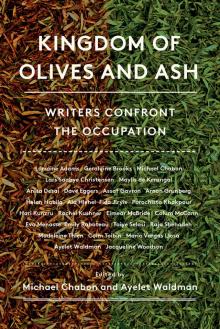 Kingdom of Olives and Ash
Kingdom of Olives and Ash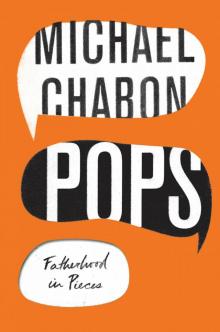 Pops
Pops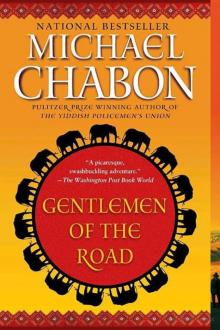 Gentlemen of the Road
Gentlemen of the Road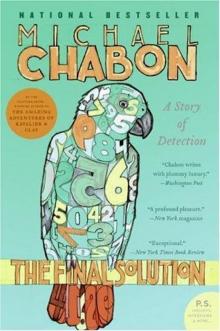 The Final Solution: A Story of Detection
The Final Solution: A Story of Detection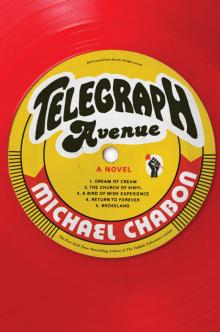 Telegraph Avenue: A Novel
Telegraph Avenue: A Novel